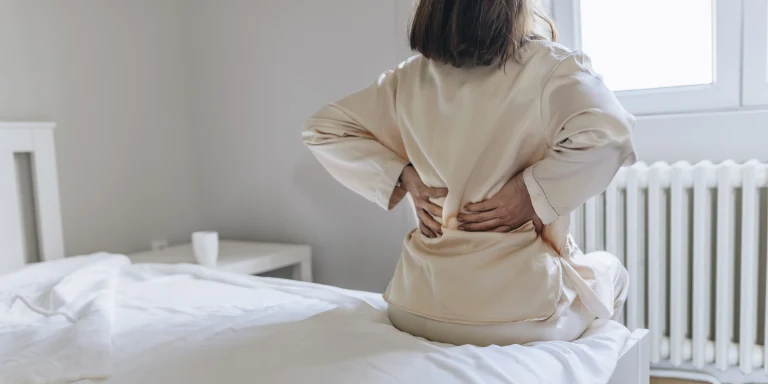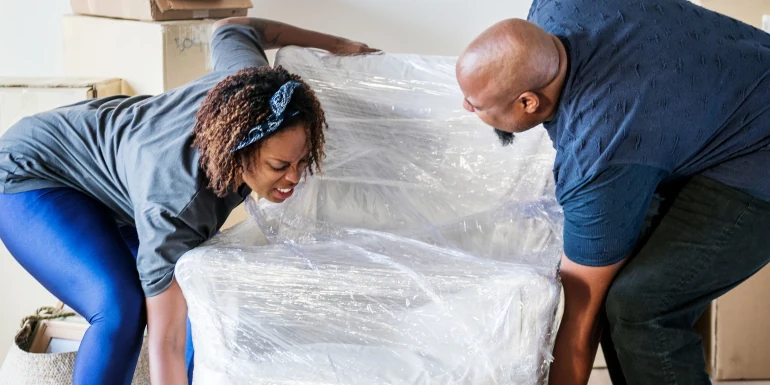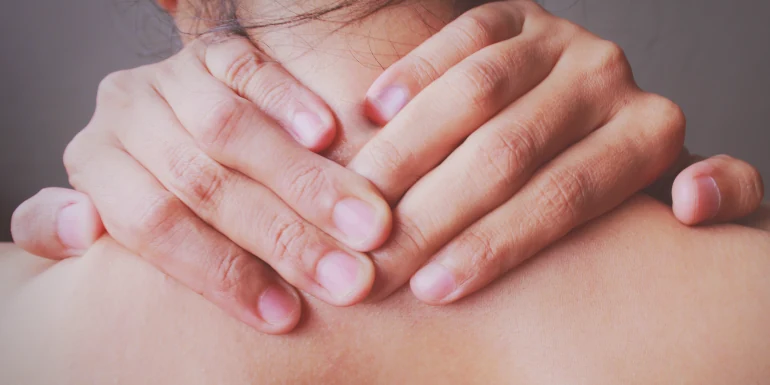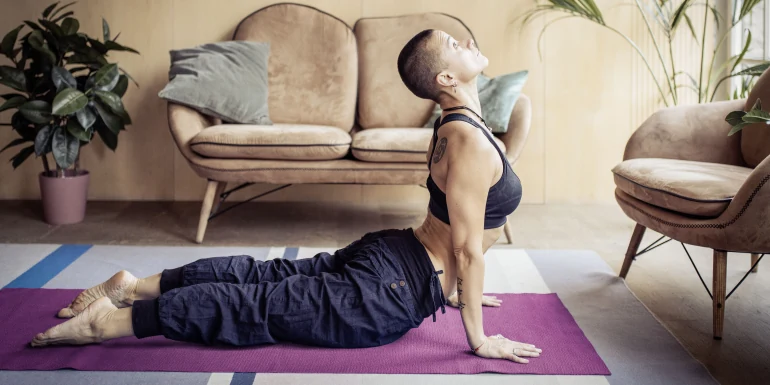
Help for back pain
If you experience acute back pain, you can try to relieve it yourself. Here you can find the best tips to get rid of the pain in your lower back.
Back pain can be acute and last for a few days or weeks at a time. In these cases, it’s normally the result of harmless tension in the muscles of the back. A hot bath, massage, medicinal plants and exercise can help.
However, chronic back pain can last for months or years. If the pain persists, it’s worthwhile visiting the doctor.
Exercise the pain away
Excessive lying down can exacerbate the pain and delay recovery, which is why you need to make sure that you do enough exercise, even if you have back pain. This will help relieve the pain, as well as prevent problems in the future. Go for a walk, try some yoga and Pilates, or do some specific exercises for back pain.
Our health consultation advisors will show you how you can relieve back pain. Furthermore, they’ll also give you tips on how to keep your back healthy in everyday life.
Medicinal plants for back pain
The following medicinal plants relieve inflammation and tension in the back:
Chilli
Capsaicin is what makes this plant spicy. It promotes circulation in the body and the release of endorphins, and this relieves pain.
Application: special creams and back plasters with chilli extract are available, or you can rub in some chilli oil. But don’t burn yourself! It’s best to use disposable gloves when rubbing in the oil.
Arnica
The substances of this ancient miracle cure are effective against tense back muscles and at reducing inflammation.
Application: for medical use, the fresh or dried flowers can be used. Arnica can be used in the form of ointments, creams, gels, oils and tinctures. They can be applied directly to the skin. Arnica globules provide quick relief from acute pain, such as strains.
Nettle
The common nettle helps with osteoarthritis and rheumatic complaints, among other things. Its contents promote circulation and reduce inflammation in the musculoskeletal system.
Application: the leaves are mostly used to treat osteoarthritis. Nettle supplements are available as medicinal plant syrup, tea, lozenges or capsules.
Hay flowers
Hay flowers are a mixture of dried flowers, seeds, leaves and grass stems, which help with sciatica pain.
Application: you can buy dried hay flowers in loose form for the bath or for a compress – or in little bags. Let them steep in steam and place them on the area that hurts.
St John’s wort
This botanical antidepressant can also combat back pain that has a psychological cause. Stress causes to the body to break down so-called “happy hormones”. St John’s wort counteracts this process.
Application: this medicinal plant comes in the form of a red massage oil. It warms the muscles, relaxes them and calms the nerves. Sunlight should be avoided after the massage (risk of skin reactions).
Willow bark
Willow bark has been used for centuries to relieve chronic pain. The substances that it contains reduce inflammation and fevers.
Application: willow bark can be applied as a tincture; in its dried form, it can be added to a warm bath. You can also drink willow bark tea several times day. You can find the extract to make the tea in the pharmacy.
Warmth helps relieve tension. It promotes stronger circulation in the muscles, which relieves tension. In the case of a pinched nerve – which can be the case with lumbago or a herniated disk – cold treatments relieves the pain more effectively. If you have a sports injury, such as a bruise, strain or sprain, you should first cool it down and then apply heat 48 hours later.
Massage to help back pain
A back massage helps relieve tension, promotes better circulation and releases “happy hormones”. Here are the five techniques to know:
Stroking (effleurage)
Warm up your hands and spread some massage oil on the back. The stroking massage is the softest technique and is a great way to start, or can be used throughout the day to help the muscles recover.
Kneading (petrissage)
Massage and knead the skin and muscles with your fingers or entire hand. Start out more gently on tense areas. This relaxes the tissues and promotes better circulation.
Friction
Carefully rub the skin and muscles underneath it in small, circular movements. Use your fingertips or the balls of your hand.
Tapping (tapotement)
Release tight back muscles with tapping movements, using the edge of the hand, cupped hands or your fingers.
Vibration
Make the muscles vibrate through quick movements back and forth using the finger tips or palm of your hand. It’s best to use this method at the end of the massage.
- Never do a massage without using oil or cream
- Never press too hard
- Never press directly on the spine or other bones
- Never carry out a massage if the back pain is severe and acute
- Do not carry out a massage if the person is pregnant
Self-massage for back pain
Self-massage relieves tension and local muscle tightness, also known as trigger points. It can also be a preventative measure. The following medical aids can help:
Massage ball
Use in circular motions for a pressure massage while lying down, or against the wall while standing up.
Fascia roller
Lie with the affected muscle on the hard foam roller, and roll the over the muscle.
Acupressure mat
Place the mat on a soft surface (mattress) and lie on it while dressed (gentle option for beginners).
Conclusion: actively fight back pain and find its causes
Even if your back pain restricts your freedom of movement, you should still continue to do enough exercise. Make sure that the exercises are not too monotonous. Massage or using medical plants can also help you to become pain-free.
You shouldn’t just try to relieve the symptoms, but also find out what is causing the pain. Reasons for the pain can be stress, too little exercise or bad posture. If you find out the cause, you can prevent problems in the future.

The specialist provided the editorial team with advice and input for this article. Evelyne Dürr (Msc in Human Movement Sciences, ETH; CAS workplace health promotion) was working for Helsana’s health consultation service at the time the article was written.



Newsletter
Find out more about current health issues every month and get all the information you need about our attractive offers from all Helsana Group companies * delivered by e-mail to read whenever it suits you. Our newsletter is free of charge and you can sign up here:
We did not receive your information. Please try again later.
* The Helsana Group comprises Helsana Insurance Company Ltd, Helsana Supplementary Insurances Ltd and Helsana Accidents Ltd.